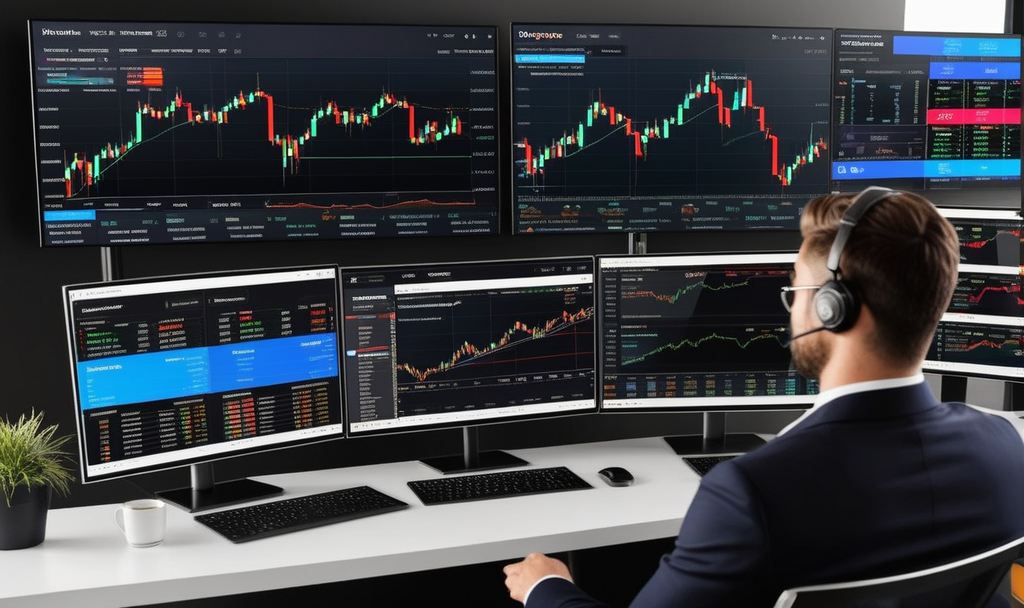The world of cryptocurrency trading is dynamic and ever-evolving, requiring traders to employ a diverse set of tools and strategies. One such powerful tool is the art of technical analysis. In this blog post, we delve into the intricacies of technical analysis in the realm of crypto trading, exploring its principles, methodologies, and role in making informed trading decisions.
Understanding the Art of Technical Analysis:
The art of technical analysis involves studying historical price charts and trading volumes to forecast future price movements. It relies on the notion that historical price movements tend to repeat, allowing analysts to identify patterns, trends, and potential reversal points in the market. Traders who master the art of technical analysis gain valuable insights into market sentiment, enabling them to make more informed decisions.
Key Principles of Technical Analysis:
- Historical Price Movements:
- Technical analysts believe that historical price movements provide valuable insights into potential future price movements. Chart patterns and trends can repeat, allowing traders to anticipate market behavior.
- Market Psychology:
- The art of technical analysis is grounded in an understanding of market psychology. Price movements reflect the collective actions and sentiments of market participants, providing analysts with clues about future trends.
- Price Discounts Everything:
- Technical analysis operates under the assumption that all information, whether public or private, is already reflected in the asset’s price. This principle suggests that the current price accounts for all available information.
- Trends Exist Until Proven Otherwise:
- Technical analysts follow the trend-following principle, assuming that existing trends are likely to continue until sufficient evidence suggests a reversal. Identifying and riding trends is a fundamental aspect of successful technical analysis.
Key Methodologies in Technical Analysis:
- Chart Patterns:
- Technical analysts scrutinize chart patterns, such as head and shoulders, triangles, and double tops or bottoms. These patterns help identify potential trend reversals or continuations.
- Trend Lines:
- Drawing trend lines on price charts assists in visualizing the direction of price movements. An upward trend line connecting higher lows indicates an uptrend, while a downward trend line connecting lower highs signifies a downtrend.
- Support and Resistance:
- Support and resistance levels are crucial in technical analysis. Support represents a price level where an asset tends to stop falling, while resistance is a level where it often halts its upward movement. Recognizing these levels aids traders in making strategic decisions.
- Indicators and Oscillators:
- Technical analysts use various indicators and oscillators, such as Moving Averages, Relative Strength Index (RSI), and Moving Average convergence Divergence (MACD), to gain additional insights into market trends and potential reversal points.
The Role of Technical Analysis in Crypto Trading:
- Informed Decision-Making:
- Technical analysis equips traders with tools to make informed decisions based on historical price data and market trends. This can be particularly valuable in the volatile and fast-paced world of cryptocurrency trading.
- Risk Management:
- By identifying potential entry and exit points, technical analysis aids in effective risk management. Traders can set stop-loss orders and take-profit levels based on key technical indicators.
- Timing Entries and Exits:
- Timing is crucial in trading, and technical analysis helps traders pinpoint optimal entry and exit points. This precision allows for more strategic trades and enhances the overall profitability of trading strategies.
- Identifying Trends:
- The ability to identify trends is a hallmark of successful technical analysis. Traders can align their strategies with prevailing trends, whether upward or downward, maximizing profit potential.
Challenges in Technical Analysis:
- Market Volatility:
- Cryptocurrency markets are known for their volatility, and sudden price fluctuations can challenge even the most sophisticated technical analysis. Traders need to be adaptable and consider other factors alongside technical indicators.
- Emotional Decision-Making:
- Traders may fall prey to emotional decision-making, particularly if a trade goes against their analysis. Overcoming emotional biases and sticking to a predefined strategy is crucial for successful technical analysis.
- External Factors:
- External factors, such as regulatory developments, macroeconomic trends, and unexpected news events, can impact cryptocurrency prices. Technical analysis, while valuable, should be complemented by an awareness of these external influences.
- Overreliance on Past Performance:
- The assumption that past price movements predict future outcomes may not always hold true. Traders should recognize the limitations of technical analysis and supplement it with a comprehensive understanding of market dynamics.
The Evolving Landscape:
- Algorithmic Trading:
- The rise of algorithmic trading has transformed the landscape of technical analysis. Automated systems can execute trades based on predefined technical indicators, allowing for rapid and precise execution.
- Integration with Fundamental Analysis:
- Traders often combine technical analysis with fundamental analysis to gain a more comprehensive view of market conditions. Understanding both the technical and fundamental aspects provides a holistic approach to decision-making.
- Cryptocurrency-Specific Indicators:
- The cryptocurrency market has unique characteristics, and traders often develop indicators specific to digital assets. Metrics like on-chain analytics and social sentiment indicators contribute to a more nuanced approach to technical analysis in crypto trading.
If you have any question about this article, please contact us …
If you can also learn about this through bitvo.com …
Conclusion:
The art of technical analysis is a powerful tool in the arsenal of cryptocurrency traders. While it comes with its set of challenges and limitations, mastering technical analysis can enhance a trader’s ability to navigate the complex and dynamic crypto markets. The principles, methodologies, and evolving landscape of technical analysis provide valuable insights, empowering traders to make informed decisions and adapt to the ever-changing nature of digital asset trading.

